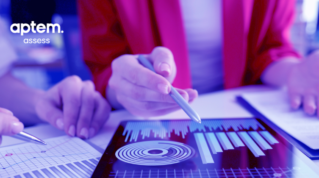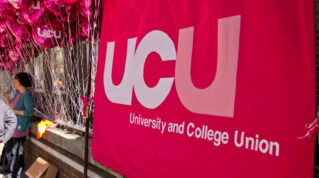Evaluating and improving the quality of teaching and learning has always been a key focus of quality assurance in FE. Lesson observation has traditionally been the main method of doing this, but the performance management models of observation that have come to dominate the sector are long past their sell-by date and need to be consigned to the scrapheap.
Not only are current models of observation ineffective in assuring or improving quality, but they are also one of the most ineffective ways an organisation can invest in developing that quality. As the largest research study into observation in the FE sector revealed a decade ago, they are also often responsible for a range of counterproductive consequences that can impact negatively on staff morale, motivation and trust.
Besides, there are a range of research-informed alternatives that have been proven to be effective. Research on teachers’ professional learning has repeatedly reinforced how meaningful and sustainable improvements in teaching and learning are built on trust, honest introspection and personal responsibility. These key factors all underpin the ethos and practice of an alternative model of observation known as unseen observation.
The term ‘unseen observation’ might seem like a contradiction, given that it is a model of observation that does not actually involve the observation of a taught lesson by a third party. The removal of the physical or virtual presence of a third-party observer confronts the longstanding issue of the Hawthorne effect – the fact that subjects alter their behaviour when they know they are being observed.
As a result, unseen observation promises to allow teachers to behave more naturally and authentically. This is particularly pertinent when considering how performance management-driven models of observation can lead to increased levels of inauthenticity in teachers’ practice, especially when observation is used as a form of high-stakes assessment.
Unseen observation is a teacher-centred model of observation where the fundamental work takes place in the pre- and post-session conversations that form the foundation of the unseen observation cycle. The teacher’s recounting and reflection on the taught lesson is what provides the stimulus for the professional dialogue between them and their collaborator, as well as a pre-session meeting between the two in which the proposed session plan is discussed.
Unseen observation shifts the emphasis from a product to a process
Originally designed for face-to-face interactions, one of the many advantages of unseen observation is its flexibility, which makes it perfect for adapting to virtual learning environments.
Unseen observation shifts the traditional emphasis of observation from a product-focused event to a process-driven practice that prioritises deep, meaningful thinking about teaching and learning through collegial conversations and collective reflection. This takes place through detailed conversations about the teacher’s planning, their delivery and analysis of its effectiveness.
By removing the ‘performance’ element traditionally associated with lesson observation, unseen observation allows us to reconceptualise how we think about observation as an educational tool to support teacher improvement. It also puts the control and accountability of the process back into the hands of practitioners, as it is built on the premise that they are the best people to decide their own professional needs and those of their students.
The process is a relatively simple one. The teacher identifies a session and particular area of practice they wish to focus on. They prepare their session plan and resources, sharing them with their collaborator before arranging a meeting.
In this meeting, the pair discuss the rationale for the selected teaching techniques and tasks, the anticipated impact on the students, and explore the teaching and learning philosophies underpinning the teacher’s reasoning before the teacher finalises their session plan. The teacher then delivers the unobserved session, including opportunities for student feedback (in person or online), which can inform subsequent reflections.
After the session, the teacher records a reflective account of the session. The teacher and collaborator meet for a second conversation to discuss its effectiveness in relation to anticipated outcomes. The teacher then writes records forward action points to work on.
Unseen observation provides a credible alternative for moving beyond the confines of the outdated performance-management model. Instead of top-down judgment, it centres on shared expertise, providing a genuine tool for supporting rather than sorting teachers.

















At last, someone after my own heart!! This is brilliant and I do hope it catches on. I will implement this as Head of Quality and make it that a peer is the collaborator every time.
I think there’s definitely significant merit in adopting this practice, especially for experienced professionals. For newer colleagues, I think a blended approach may be a better alternative. I would also add that if lessons are being delivered remotely, it’s simple enough to record the sessions on an ongoing basis and then focus on specific areas where there are either self-identified needs, or where feedback and evidence suggestions it may be beneficial to observe by reviewing the recordings. You can always have the pre-lesson conversations too. If recording the session becomes the norm, the potential for the Hawthorne effect to impact on delivery may be reduced.
Observation as an improvement tool depends on the quality of the observer and the removal of threat. For example, I once on a college inspection observed a lecturer in her first few months of teaching who in a practical hairdressing session was finding it very difficult to put across some key aspects and get through the practical work in a three hour session. I gave her examples of how I had seen tutors at two outstanding providers approach the same session. She approached her head of quality that afternoon to ask if I could observe her again the next day with a different group. As inspection was more improvement focused I popped in and out a few times and she had transformed her practice to something that was by any definition outstanding. As her students left at the end they were telling her things about how much they had learned and had enjoyed the session. Few quality and self-assessment systems have sufficient impact on identifying best practice and sharing it to raise practice. Getting the system right for new staff by mentoring with the best teachers should certainly be the foundation for any system. Getting a manager, often outside the vocational area, rather than an excellent teacher with subject expertise involved in observations is a definite mistake if you want to improve practice and remove threat. Most people I know went into teaching to improve the life chances of their future students, and that should be our primary aim. There is often too much focus on what the teacher does in a session, rather than what the learners learnt.
This is something as Head of Quality, I have already started to implement, especially the recording of sessions, then watching them back.
I have found that if you are present when a staff member is delivering a teaching session, unless they are confident in delivering, this in most cases, will change the dynamics of what is being taught – it is not natural. I have now taken the approach of seeking learners who are behind target and discussing these learners with the tutor, to establish what they feel the main reasons are behind the learner not being on target. We draw out strategies that may make a difference to the teaching and learning taking place. The session is recorded using the identified techniques, then the tutor reflects on their performance but also identifies where the differences took place and the impact this has had on the learner. An interview with the learner takes place after, gaining their thoughts on their experiences so far. Once the tutor has reflected, we meet again to discuss the outcome. This model is then repeated. We create a CPD action plan, so the tutor can practice different techniques as well as observe other recorded sessions by other tutors, using different strategies as they see fit for their learners, as well as sharing best practice.
I have used this when observing PGCE Post 16 trainee teachers. Its a highly effective model that really focusses the trainee teacher to think very carefully and to a large extent, justify their teaching approach. It does require skill full questioning by the ‘observer’ but this is more than justified by the high level of academic discussion afterwards. Its not the be all and end all but a very powerful tool to have at your disposal.